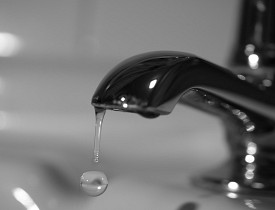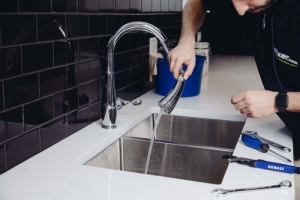Any individual will have his or her own way of thinking in relation to Should I Repair or Replace a Leaky Faucet?.

Trickling taps could look like a small aggravation, yet their effect goes beyond simply the nuisance of the noise. From drainage to incurring unneeded economic expenses and health and wellness dangers, ignoring a leaking tap can result in numerous repercussions. In this short article, we'll explore why it's essential to address this typical home issue quickly and effectively.
Waste of Water
Environmental Influence
Trickling taps contribute significantly to water wastage. According to the Environmental Protection Agency (EPA), a single tap leaking at one drip per second can lose more than 3,000 gallons of water each year. This not only stress water sources but likewise influences ecosystems and wildlife depending on them.
Step-by-Step Guide to Dealing With a Dripping Faucet
Tools Required
Prior to attempting to deal with a trickling tap, collect the essential tools, consisting of an adjustable wrench, screwdrivers, substitute components (such as washers or cartridges), and plumber's tape.
Usual Faucet Issues and Their Solutions
Recognize the kind of tap and the certain problem creating the drip. Typical problems consist of damaged washing machines, rusty shutoff seats, or defective O-rings. Describe maker directions or online tutorials for step-by-step advice on repair services.
Financial Expenses
Enhanced Water Costs
Past the environmental effect, trickling taps can blow up water costs considerably. The accumulated waste gradually converts right into higher energy costs, which could have been stayed clear of with timely repair services.
Possible Home Damage
Additionally, extended trickling can lead to harm to fixtures and surfaces surrounding the faucet. Water buildup can cause staining, rust, and also structural issues if left ignored, leading to added repair service prices.
Health and wellness Problems
Mold And Mildew and Mold Growth
The constant existence of wetness from a dripping tap develops a perfect environment for mold and mold development. These fungis not just jeopardize indoor air top quality but also pose health risks, particularly for individuals with breathing problems or allergies.
Waterborne Illness
Stagnant water in dripping taps can become a breeding ground for germs and various other virus, raising the threat of waterborne diseases. Pollutants such as Legionella bacteria grow in stagnant water, potentially bring about major illnesses when consumed or breathed in.
DIY vs. Specialist Repair work
Pros and Cons of Do It Yourself Repair Work
While some may attempt to repair a leaking tap themselves, do it yourself repairs come with their own set of difficulties. Without proper knowledge and tools, DIY attempts can aggravate the concern or bring about insufficient fixings, extending the problem.
Benefits of Employing an Expert Plumber
Employing a professional plumber makes certain that the underlying source of the leaking tap is attended to efficiently. Plumbings have the knowledge and tools to identify and fix tap problems successfully, saving time and minimizing the risk of more damage.
Ecological Obligation
Private Payment to Conservation
Taking obligation for dealing with trickling faucets straightens with broader initiatives toward water conservation and environmental sustainability. Every individual's activities jointly make a significant effect on protecting precious resources.
Lasting Living Practices
By prioritizing punctual repair work and adopting water-saving practices, individuals contribute to sustainable living techniques that benefit both present and future generations.
Preventive Measures
Regular Maintenance Tips
To stop leaking faucets, perform regular maintenance such as cleansing aerators, evaluating for leakages, and changing damaged parts quickly. In addition, think about setting up water-saving gadgets or updating to much more effective components.
Value of Prompt Repairs
Addressing trickling taps as quickly as they're noticed prevents further water wastage and possible damage, eventually conserving both water and cash over time.
Effect On Residential Property Value
Perception of Well-Maintained Residential Property
Preserving a property in good condition, consisting of resolving upkeep issues like trickling faucets, boosts its perceived value and charm among possible buyers or tenants.
Impact on Resale Value
Features with properly maintained plumbing fixtures, including taps, command higher resale worths in the property market. Addressing dripping faucets can add to a favorable impression during building evaluations and arrangements.
Conclusion
Attending to a trickling tap goes beyond simple benefit; it's a necessary step toward preserving water, minimizing financial expenses, and safeguarding wellness and building. Whether through DIY repairs or expert help, taking action to take care of dripping taps is a tiny yet impactful method to promote accountable stewardship of sources and add to a healthier, much more lasting future.
How to Fix a Leaky Faucet: Step-by-Step Repair Guide
A leaky faucet may seem like a simple annoyance, but if it's not fixed promptly, that leak could cost hundreds to potentially thousands. From water damage to mold, mildew, and high water bills, even a tiny leak can be catastrophic if left unattended. Damage like this can even affect the overall value of your home, so it's important to take the right approach for leaky faucet repair. You may need the help of a plumber in some cases, but we've got a few tips you can try on how to fix a leaky faucet before calling the pros.
Four Faucet Types
When you're learning how to fix a leaky faucet, the first step is knowing what kind of faucet you're working with! There are four common types.
Cartridge Faucets
Cartridge faucets come in one- or two-handled varieties. In one-handled cartridge faucets, hot and cold water combines in a single cartridge. In the two-handled versions, hot and cold water are controlled separately and mixed in the faucet.
Ball Faucets
Ball faucets have a single lever you push up and down to adjust the pressure and rotate to change the temperature. A slotted metal ball controls the amount of water allowed into the spout.
Compression Washer Faucets
They're the oldest type of faucet, but they're still used in many homes — especially older ones. Compression faucets have two separate handles that, when turned, raise or lower the washer that seals a water valve. This valve stops water from flowing through the faucet when it is turned off.
Disc Faucets
Disc faucets rarely need to be repaired due to their maintenance-free design. The water flow is controlled by two discs — the upper one raises and lowers against a fixed lower disc, creating a watertight seal. If your disc faucet starts leaking, you may need to replace the seals or clean residue buildup from the inlets.
Fixing a Leaky Faucet
Step 1: Turn Off the Water
Whether you're learning how to fix a leaky bathtub faucet or how to fix a leaky kitchen faucet, always turn off the water supply to your working area when you're fixing a leak. The last thing you want is a flood added to your list of things to fix.
Look for the shutoff valves below your sink or around the tub and turn them clockwise to stop the water flow. If your faucet doesn't have shutoff valves, you may need to turn off the water for the whole house. Check to make sure it's off by turning the faucet on. If nothing comes out, you're ready to start the repair.
Step 2: Take Apart the Faucet
How you disassemble your faucet depends on the type of fixture you have. You can use a flathead screwdriver to remove the caps on top of the handle or handles for cartridge and compression faucets. Inside, you should see handle screws. Unscrew these with a screwdriver to remove the handle.
Disc- and ball-style faucets will typically have an inlet screw near the handle, and removing that will reveal the interior of the faucet.
Detach the Valve Stem
For cartridge- and compression-style faucets, you'll see the inner valve stem or cartridge once you remove the faucet handles. If you have a compression faucet, unscrew the brass valve stem. If you have a cartridge faucet, pull out the cartridge. If your cartridge has been in place for a while, it may require some tools or extra force to remove it due to mineral deposits.
Examine and Replace Parts
Once you've removed the parts, check them out to confirm what needs to be replaced. You may see corroded rubber washers, O-rings, stems, or cartridges. On a ball-style faucet, check the seats and springs for damage.
If you need to repair a leaky disc faucet, check the inlet and seals on the lower disc.
Once you determine what parts must be replaced, visit your local hardware store. Bring the damaged parts with you to ensure you can purchase the correct components to replace them.
Clean Valves and Faucet Cavity
If you've removed a stem or cartridge, you may notice mineral buildup in the faucet's threads. Use white vinegar to clean the valve seat by soaking it for a few minutes, then scrub it away with a soft toothbrush and rinse with warm water. You can also clean the interior of the faucet in the same way.
Reassemble the Faucet
Once your faucet is cleaned and the required parts have been replaced, it's time to reassemble it. Put the pieces back together and slowly turn the water supply back on. Doing this slowly is crucial because too much initial water pressure can damage the new hardware you've just installed.
https://homewarranty.firstam.com/blog/how-to-fix-leaky-faucet

We hope you enjoyed our post on How to Fix a Dripping or Leaky Faucet . Thank you for taking time to browse our piece of content. Don't hesitate to pause to share this entry if you enjoyed reading it. Thank you so much for taking the time to read it.